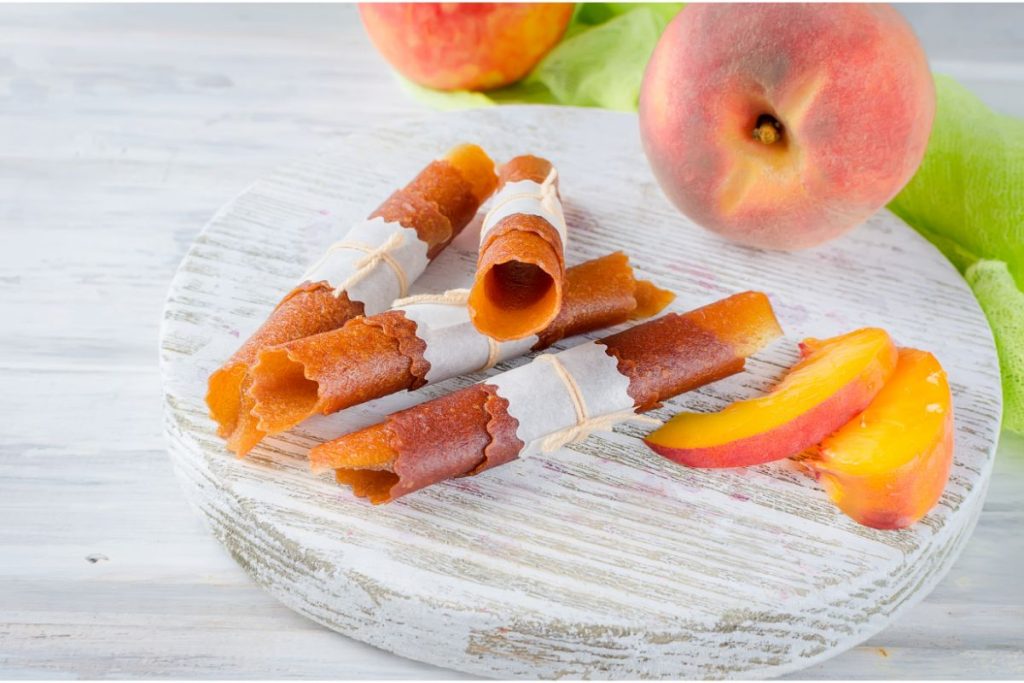Fruits, vegetables, meats, and herbs are all types of foods that can be dehydrated. Some surprising foods you can dehydrate include sauces, syrups, honey, yogurt, and pet food.
Table of Contents
The Best Foods That Can Be Dehydrated
The best foods you can dehydrate include veggies, fruits, herbs, fish, and meat. They have a high chance of successfully drying, retaining their nutrients, and having a long shelf life.
Fish
Choose lean, firm, non-oily varieties of fish to dehydrate. Only dehydrate fresh fish, and ensure you use a marinade that contains plenty of salt.
Some of the best choices include:
- Cod
- Flounder
- Halibut
- Sea Bass
- Tuna
- Yellow Perch
Fruits
Most fruits can be dehydrated whole, though larger fruits and those with higher water content can be sliced for faster drying. For example, cutting whole bananas into banana chips will save 3-5 hours of drying time.
Fruits should also be soaked in an ascorbic acid (vitamin C) solution or tossed in lemon juice before dehydrating to prevent oxidation and retain color.
Here are some of the best fruits to dehydrate:
Herbs
Herbs dehydrate faster than any other type of food. They can be air-dried or dehydrated in a food dehydrator using a low-temperature setting.
Some of the best herbs to dehydrate include:
Meats
Lean meats work best for dehydrating. If you dehydrate meat for jerkies, ensure you trim away any visible fat and heat it to 160°F before drying it.
The best meats to dehydrate include:
Vegetables
Most vegetables are easily dehydrated. Vegetables require blanching (being placed in boiling water for 3-5 minutes) before they are dehydrated.
Here are some of the best veggies to dehydrate:
Surprising Foods That Can Be Dehydrated
Fruit Leather
Fruit leather is also known as a fruit roll-up. While you can find them in grocery stores, the homemade version is healthier than store-bought.
You can make fruit leather using a blend of dehydrated fruit, jam, applesauce, or making a puree out of freshly sliced fruit. Fruit leather has a shelf-life similar to dried fruit and can be dehydrated in a few hours.

Honey and Syrup
While fresh honey is unlikely to ‘go bad’ or experience spoilage, it can crystalize or discolor if not stored perfectly. Dehydrating and then powdering honey ensures an indefinite shelf life while making it portable.
The same process is perfect for syrups, which are also vulnerable to crystalization.
Pet Food
If you love backpacking and want to take your canine companion with you, dehydrated pet food is a great way of bringing their favorite meals along. The dehydration process removes the moisture content without causing a loss of nutrients and takes up less space. It’s also easy to rehydrate – simply add hot water!
Sauces
Sauces take up a lot of food storage space with bulky glass jars and often require refrigeration once opened. A great solution is to dehydrate your sauces and turn them into powder. A quart-sized jar of fresh sauce concentrates down to just a single cup of powder once dehydrated.
Yogurt
Yogurt can be dehydrated in sheets or in bite-sized pieces, which are great for adding to granola.
Dehydrated yogurt has a tangy flavor. If you like your yogurt sweet, add a bit of honey to it before beginning the dehydration process.

What Foods Should Not Be Dehydrated?
There are a number of foods that should not be dehydrated at home, including:
- Eggs
- Fatty meats
- Juices
- Milk
- Nuts
- Olives
- Peanut butter
- Soda
While some of these foods are available commercially in dried or dehydrated versions, they also have preservatives and have been processed and treated to eliminate food born pathogens.
Can Cheese be Dehydrated?
Cheese should not be dehydrated due to its fat content. Fatty foods such as butter, nuts, and avocados go rancid quickly. For better food preservation, consider freezing high-fat foods.
How to Dehydrate Food Using a Food Dehydrator
The best way to ensure evenly dried food is to make it in a food dehydrator:
- Preparation. Depending on the type of food, you will first rinse and dry it, then remove any inedible parts. Fruits should be soaked in an ascorbic acid solution or tossed in lemon juice, while vegetables should be blanched. Break down any larger pieces of food by cutting them into 1/4-inch slices.
- Arrange the food. Lay out your sliced food on dehydrator trays. Ensure they are evenly spaced in a single layer to prevent inconsistent drying.
- Dehydrate. Turn on your food dehydrator, and set it to the correct temperature. Ensure enough drying time for all the water content to be removed. Most foods will need 6-10 hours to dehydrate fully.
- Store. After dehydrating, allow the food to cool to room temperature. Store in a cool, dark place in an airtight container for the best shelf life.
What are the Benefits of Dehydrating Food?
- Cheaper than store-bought
- Easier to store
- Free up refrigerator and freezer space
- Great for taking on outdoor adventures
- Longer shelf life
- Maintains nutritional value
What is the Best Temperature for Dehydrating Food?
Different types of food will require a different dehydrating temperature.
Fruits should be dehydrated at 125°F-135°F, vegetables at 120°F-140°F, and meats at 160°F. Herbs require a lower temperature of 95°F – 115°F to dry while retaining their aromatic oils.
How Long Does it Take to Dehydrate Food?
Dehydrating food takes an average of 8 – 10 hours, though some foods may require as much as 30 hours. As a rule, foods with lower water content (such as herbs and vegetables) dehydrate faster.

